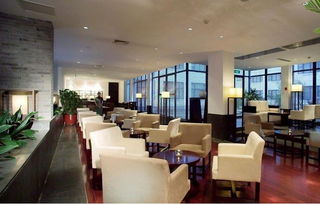Title: Crafting Captivating Visuals for Restaurant and Entertainment Venues
In the fiercely competitive landscape of the restaurant and entertainment industry, the visual appeal of your establishment plays a pivotal role in attracting customers and creating memorable experiences. Harnessing the power of effective imagery through professional rendering and visualization techniques can significantly enhance your marketing efforts and elevate your brand presence. Let’s delve into the intricacies of creating compelling visual representations for your restaurant and entertainment venues.
Understanding the Importance of Visuals:
In today's digital age, where consumers are inundated with an abundance of choices, visually enticing content serves as a powerful tool to grab attention and leave a lasting impression. Highquality, realistic renderings and concept visualizations allow potential patrons to envision themselves within the ambiance of your venue, enticing them to explore further and ultimately make a visit.
Key Elements of Effective Visual Representations:
1.
Ambiance and Theme:
Every restaurant or entertainment venue has a unique ambiance and theme that sets it apart. Visual representations should accurately capture the essence of these elements, whether it’s the cozy warmth of a rustic bistro or the vibrant energy of a nightclub.
2.
Architectural Design:
Detailed renderings of architectural layouts, interior spaces, and exterior facades provide a clear understanding of the spatial dynamics and flow within the venue. This helps potential customers visualize the layout and imagine themselves moving through the space.
3.
Décor and Furnishings:
Paying attention to the finer details such as furniture styles, lighting fixtures, decor elements, and color schemes is essential for creating a visually cohesive and inviting environment. These elements should align with the overall theme and ambiance of the venue.
4.
Landscaping and Outdoor Areas:
For venues with outdoor seating or recreational spaces, showcasing landscaped areas, garden designs, or al fresco dining setups can enhance the allure and appeal to customers seeking a unique dining or entertainment experience.
Utilizing Technology for Visualization:
1.
3D Rendering Software:
Leveraging advanced 3D rendering software allows designers to create highly realistic visualizations that accurately portray the intended look and feel of the venue. These renderings offer a glimpse into the future, enabling stakeholders to make informed decisions during the design and planning phases.
2.
Virtual Reality (VR) and Augmented Reality (AR):
Embracing VR and AR technologies takes visualization to the next level by providing immersive experiences for potential customers. Virtual walkthroughs of the venue or interactive AR overlays showcasing menu items and entertainment options can pique curiosity and drive engagement.

3.
Drone Photography and Videography:
Aerial drone photography and videography offer unique perspectives of the venue's exterior, surrounding landscape, and architectural features. These dynamic visuals can be incorporated into marketing materials, social media campaigns, and promotional videos to showcase the venue from captivating angles.
Guidelines for Creating Compelling Visuals:
1.
Authenticity:
Ensure that visual representations accurately reflect the true essence and atmosphere of the venue. Authenticity builds trust and credibility with customers, setting realistic expectations for their experience.
2.
Consistency:
Maintain consistency in visual elements across all marketing channels and materials, including website imagery, social media posts, advertisements, and promotional materials. Consistent branding reinforces brand identity and fosters recognition.
3.
Engagement:
Encourage engagement and interaction with visual content by incorporating callstoaction (CTAs) that invite customers to explore further, book reservations, or attend upcoming events. Engaging visuals coupled with compelling CTAs can drive conversions and boost customer loyalty.
4.
Feedback and Iteration:
Solicit feedback from stakeholders, designers, and potential customers throughout the visualization process. Iterative refinement based on feedback ensures that the final visuals align with expectations and effectively resonate with the target audience.
Conclusion:
In the competitive landscape of the restaurant and entertainment industry, the power of visual storytelling cannot be overstated. By investing in highquality renderings, immersive technologies, and attention to detail, you can create captivating visual representations that elevate your brand, attract customers, and leave a lasting impression in the minds of patrons. Embrace the art of visualization to transform your venue into an irresistible destination for culinary delights and entertainment experiences.


